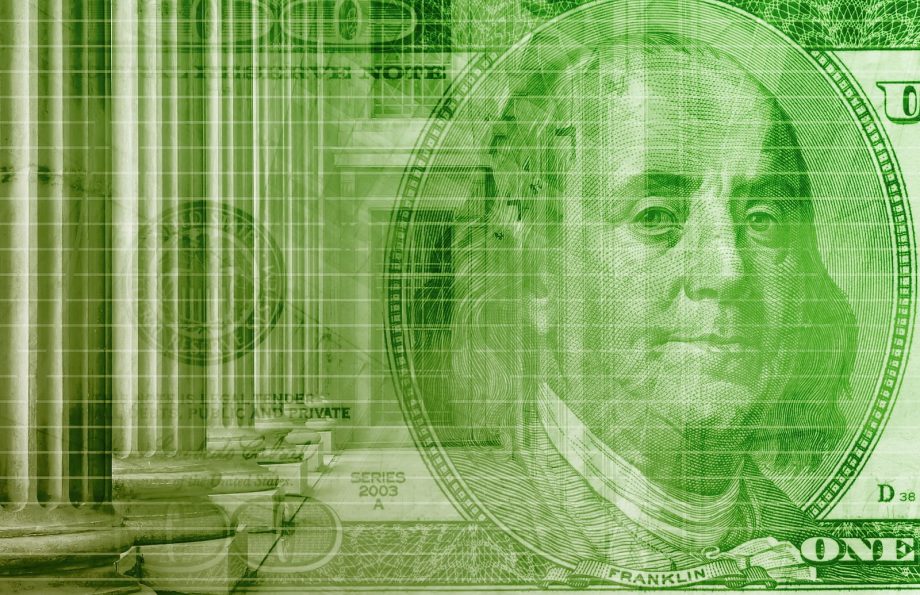U.S. Dollar Weakens Amid Rate Cut Expectations and Economic Uncertainty – June 27, 2025
(STL.News) The U.S. dollar has entered a period of sustained decline as markets react to mounting signs of economic slowing, shifting interest rate expectations, and geopolitical easing that is pressuring the dollar’s safe-haven status. With the Federal Reserve signaling a possible shift toward monetary easing later this year, investors are reassessing the dollar’s strength, triggering weakness across major currency pairs.
The U.S. Dollar Index (DXY), which measures the greenback’s value against a basket of six major world currencies, has fallen sharply in recent trading sessions. As of this writing, the DXY is trading below critical support levels, marking a clear turn in market sentiment.
Why Is the Dollar Declining?
Several overlapping factors contribute to the dollar’s downward trend. Chief among them are:
1. Federal Reserve Rate Cut Expectations
For much of the past two years, the dollar has benefited from the Federal Reserve’s aggressive rate hikes, which have made U.S. assets more attractive to global investors. However, that trend is now reversing.
With inflation steadily retreating toward the central bank’s 2% target, the Fed has shifted its tone from hawkish to cautious. Markets are now pricing in a strong probability of at least one interest rate cut before the end of 2025, potentially as early as September. Lower interest rates typically weaken the dollar by reducing the return on dollar-denominated assets.
Federal Reserve Chair Jerome Powell recently hinted that the Fed is prepared to adjust policy in response to softening economic data. That signal has been enough to trigger a pullback in the dollar.
2. Slowing U.S. Economic Momentum
The latest batch of economic data points to a cooling economy. Job growth has moderated, consumer spending is under pressure, and business investment appears to be slowing. June’s retail sales came in below expectations, while the most recent Consumer Confidence Index declined for the second straight month.
These indicators reinforce the argument that the U.S. economy may be entering a period of slower growth, possibly even teetering on the edge of recession. If that proves true, further rate cuts would become even more likely, adding additional downward pressure on the dollar.
3. Global Risk Appetite Improves
Another factor undermining the dollar is a shift in global sentiment. The greenback is traditionally seen as a safe-haven currency, attracting flows during periods of geopolitical or financial instability.
However, recent de-escalation in Middle East tensions, coupled with signs of stabilization in Europe and Asia, has led investors to move funds into riskier assets and alternative currencies. This shift has boosted the euro, the British pound, and various emerging market currencies at the expense of the dollar.
4. Interest Rate Differentials Narrowing
During the Fed’s aggressive rate hike cycle from 2022 to 2024, the dollar surged on the back of wide interest rate differentials. However, central banks in Europe and the UK have either paused rate cuts or maintained hawkish postures, thereby reducing the yield gap that once favored the U.S.
As a result, investors are reallocating capital toward these markets, especially where inflation remains more persistent, and central banks are expected to hold higher rates longer.
5. Fiscal Concerns Weighing on Long-Term Outlook
Adding to the dollar’s woes is increasing concern about U.S. fiscal health. With the federal deficit projected to exceed $2 trillion in 2025 and the national debt surpassing $35 trillion, long-term confidence in U.S. economic stewardship is waning.
Investors are becoming increasingly cautious about long-term Treasury exposure, particularly as repeated debt ceiling debates and budget battles underscore the political dysfunction in Washington. These concerns may not drive immediate dollar outflows, but they add to the broader bearish outlook.
Technical Indicators Point to Bearish Momentum
Beyond the fundamental story, technical analysis confirms the bearish tone surrounding the dollar.
1. Moving Averages
The U.S. Dollar Index recently dropped below its 50-day moving average, signaling short-term weakness. More importantly, it is approaching its 200-day moving average. A break below this level would mark a long-term bearish shift in trend.
2. RSI (Relative Strength Index)
The RSI for the DXY is currently near 38, not quite in oversold territory, but indicating that sellers are in control. If the RSI drops below 30, a technical bounce could be likely—but for now, momentum is clearly to the downside.
3. MACD (Moving Average Convergence Divergence)
The MACD has moved below its signal line and remains in negative territory, further confirming bearish momentum. The widening histogram suggests accelerating downside pressure.
4. Support and Resistance Levels
Key support has been broken at 103.50 and 102.30. If the index falls below 101.50, it could open the door to further declines toward the psychological 100 level.
On the upside, resistance is building near 104.50, with major resistance sitting around 105.70. A reversal would require a shift in Fed guidance or stronger-than-expected economic data—neither of which appears imminent.
What’s Next for the Dollar?
The dollar’s future path will depend heavily on the Federal Reserve’s actions and incoming economic data. If inflation continues to ease and growth slows further, markets will likely expect more aggressive Fed action, which could lead to additional downside for the US dollar.
Conversely, any signs of reacceleration in the U.S. economy or renewed global instability could lend support to the dollar.
For now, however, the outlook is clearly tilted toward further weakness—both technically and fundamentally. Traders and investors will be watching closely as the Fed’s next move approaches, and the dollar’s role as a global anchor currency is once again put to the test. The action is indirectly telling the Fed what they need to do with interest rates. The financial markets are usually correct. They need to respond accordingly.
STL.News will continue to monitor this story as developments unfold in global markets and U.S. policy.
Copyright © 2025 – St. Louis Media, LLC. All rights reserved. This material may not be published, broadcast, or redistributed.
For the latest news, weather, and video, head to STL.News.
